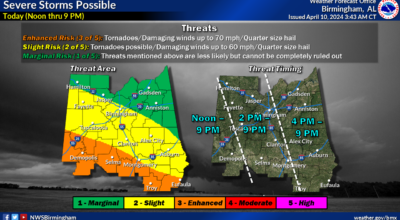ALDOT installs brackets for plaques on Pettus Bridge
Published 6:43 pm Monday, December 9, 2013

Employees of the Alabama Department of Transportation work Monday morning to install a bracket on one of the arches on the Edmund Pettus Bridge. The bracket will soon hold a National Parks plaque commemorating the bridge’s historical significance.
Motorists crossing the historic Edmund Pettus Bridge Monday morning likely slowed down when they saw half-a-dozen workers in neon vests, and line of work trucks and the fire of a welder’s torch, but they likely didn’t realize the significance of the work going on as they passed.
In March, the National Parks Service and the Department of the Interior announced that the Edmund Pettus Bridge was one of 13 sites across the country that would be named a national historic landmark, and workers from the Alabama Department of Transportation were on the bridge assembling the rackets that will soon hold the plaques proclaiming this distinction.
“We are supplying traffic control while the bridge bureau installs the brackets today, but the plaques will be installed later,” ALDOT district manager Rex Thompson said.
A plaque will be placed facing traffic on each span. The only question that remains is when will that take place?
“There will be two plaques placed on the bridge to commemorate this designation,” Rebecca White, spokesperson with the Alabama Department of Transportation, said. “We are supposed to meet with the Mayor of Selma to set up a date for this plaques to be displayed.”
White said Monday that to the best of her knowledge that meeting had not taken place.
When the distinction was announced earlier this year, the department released the following description of “Bloody Sunday” and the bridge’s historical significance.
“Edmund Pettus Bridge, Selma, Ala. — On March 7, 1965, civil rights marchers drawing attention to the need for voting rights legislation were attacked by law enforcement officials as they crossed the Edmund Pettus Bridge. The attack, which came to be known as “Bloody Sunday,” contributed to the introduction and passage of the Voting Rights Act of 1965, considered to be the single most effective piece of civil rights legislation ever passed by the US Congress.”
The national historic landmark program, established in 1935, is administered by the National Park Service on behalf of the Secretary of the Interior.
There are 2,540 designated national historic landmarks across the country.
Mayor George Evans could not be reached for comment on the project Monday.




